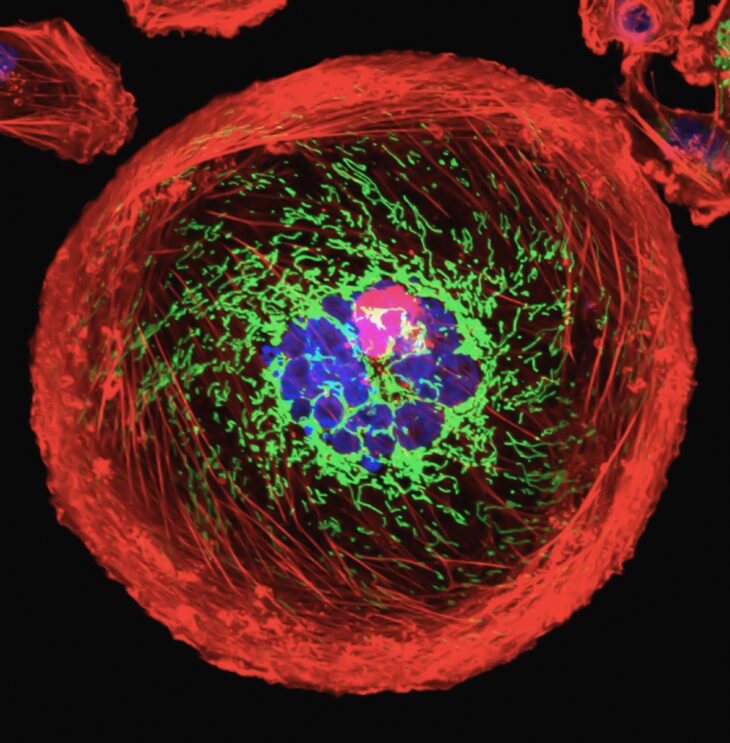Breast cancer affects thousands of people every year. Scientists have shown many factors can influence breast cancer, like age, lack of physical activity, and obesity. But they don’t know exactly how obesity and breast cancer are linked.
Researchers in the past hypothesized that tissue inflammation in obese patients was linked to cancer. Other researchers showed that obese patients have a specific genetic mutation that is also linked to cancer. However, they don’t fully understand how this mutation acts to produce different tumor types.
Ha-Linh Nguyen and colleagues recently investigated the connection between breast cancer and obesity. Nguyen and his team wanted to determine how obesity affects breast cancer, by examining tissue cells and genetic profiles of breast tumors in obese patients. Their goal was to see if doctors could create more targeted treatments for breast cancer based on the genetic mutations involved.
They gathered genetic data from the tumors of over 2,000 breast cancer patients, taken during multiple large-scale breast cancer studies done by 5 accredited cancer research institutions. To ensure the breast tumors had not been altered in any way, they only used data from patients who had not yet begun cancer treatment.
The researchers defined obesity based on a ratio of the patient’s weight and height, called body mass index, or BMI. They used the patients’ BMI data to categorize them into 3 categories: obese, overweight, and lean. Obese patients had a BMI higher than 30 kilograms per square meter (kg/m2), overweight patients had a BMI between 25 to 30 kg/m2, and lean patients had a BMI from 18.5 to 25 kg/m2. For reference, the average BMI for adults is about 26 kg/m2.
Then they sorted the patients into further categories based on the type of breast tumors they had. These categories included patients with tumors that started in the milk production glands in the breast, termed Invasive Lobular Carcinomas tumors, or ILC tumors, versus patients with no special type of tumors.
The researchers also took into account other biological factors used to identify types of breast cancer, like estrogen receptors. In people with estrogen receptor-positive breast cancer, their tumor contains a receptor that uses the hormone estrogen to help fuel tumor cell growth. In people with estrogen receptor-negative breast cancer, their tumor does not contain this receptor.
They also considered another way of determining the type of tumor, called the HER2 factor. An HER2-positive breast cancer patient contains a protein called the human epidermal growth factor 2, which allows the cancer cells to multiply quickly. After the researchers used these biochemical markers to categorize the patients by tumor type, they used statistical analyses to compare tumor types in obese patients versus the lean and overweight groups.
The scientists found that in obese patients with estrogen receptor-positive and HER2-negative non-special tumors, their BMI influenced their breast cancer similar to the way aging influenced cancer development. They explained that as we age our body’s immune response slows down, which gives cancer cells more time to build up before our body responds to stop the process. They suggested these results reinforced the idea that both age and obesity are risk factors for developing breast cancer.
Next, the scientists looked at whether tumors from each group had one or more cancer-causing mutations. The team specifically looked at genes that researchers had previously shown to have mutations that cause breast cancer. They also looked at the tumor DNA to see if there were any mutations that cause deletion or amplification of certain sections of DNA, called copy number alterations.
The researchers found different gene mutations in patients with different BMIs. They found that a gene involved in signaling cell division, called P1K3CA, was mutated less often in obese patients with estrogen receptor-positive, HER2-negative, non-special tumors. Mutations in 2 other genes, CCND1 and CCNE1, were more common in obese patients with estrogen receptor-positive tumors.
The researchers concluded their study points to a genetic link between breast cancer and obesity. They suggested some gene mutations found in tumors of obese patients, particularly the CCND1 and CCNE1 mutations, could allow for targeted breast cancer treatments. They suggested future researchers should examine how the biochemical pathways these genes are associated with actually contribute to breast cancer formation to better develop treatments.


